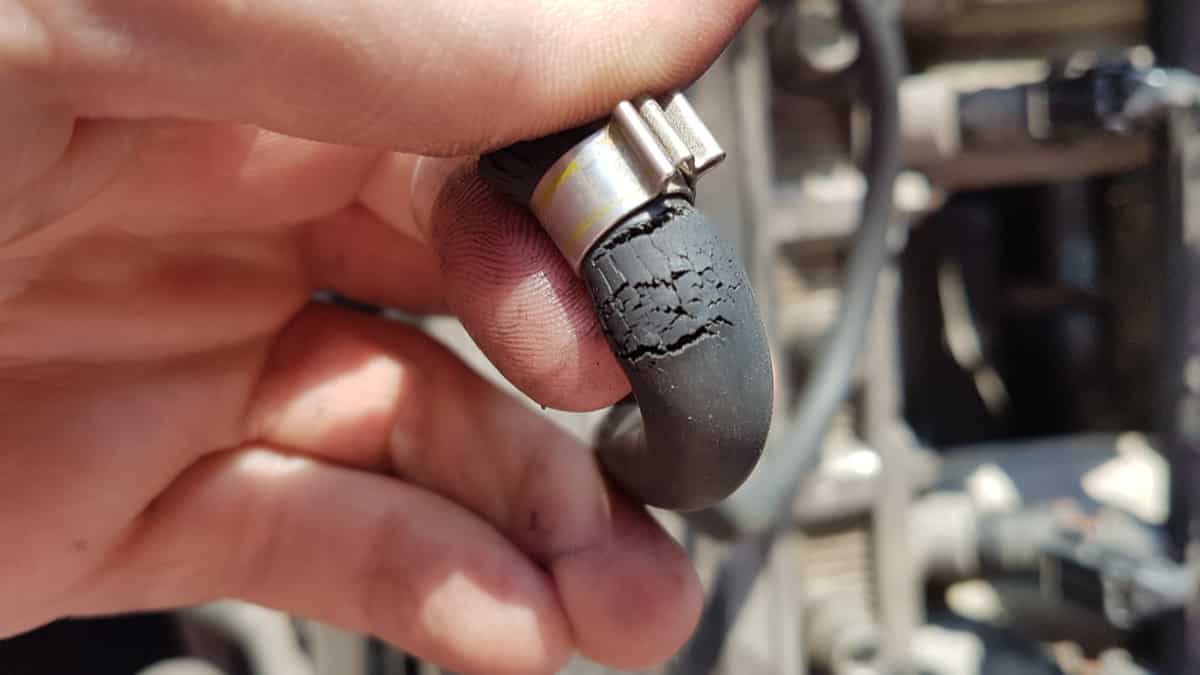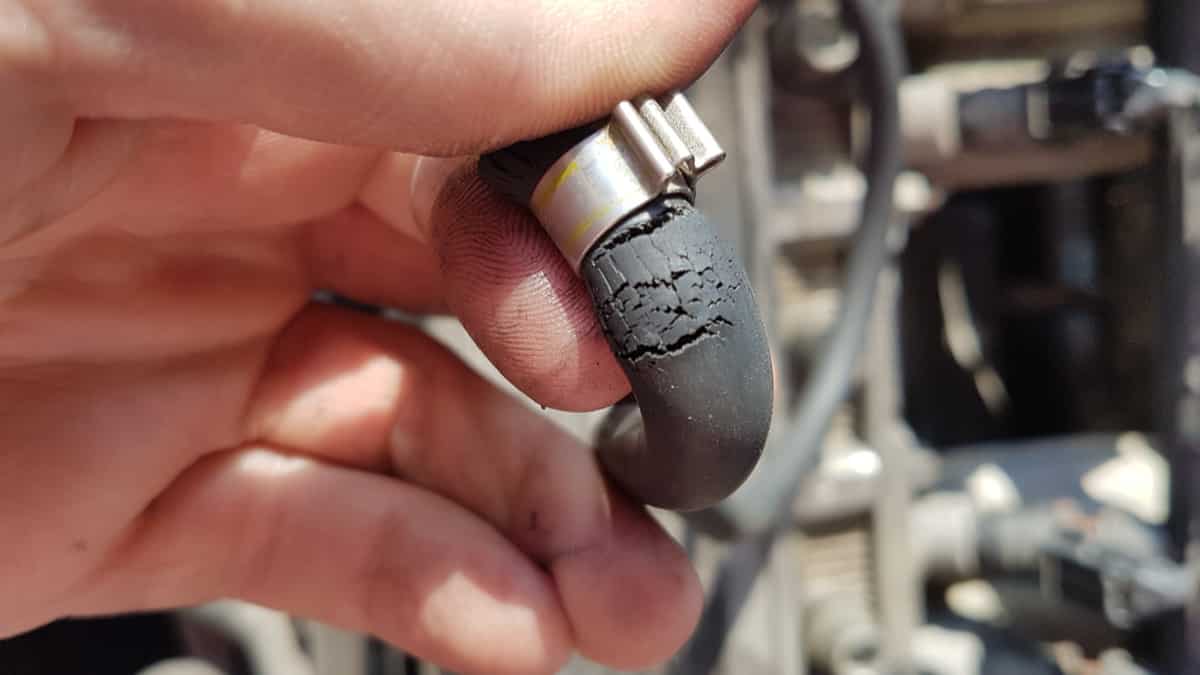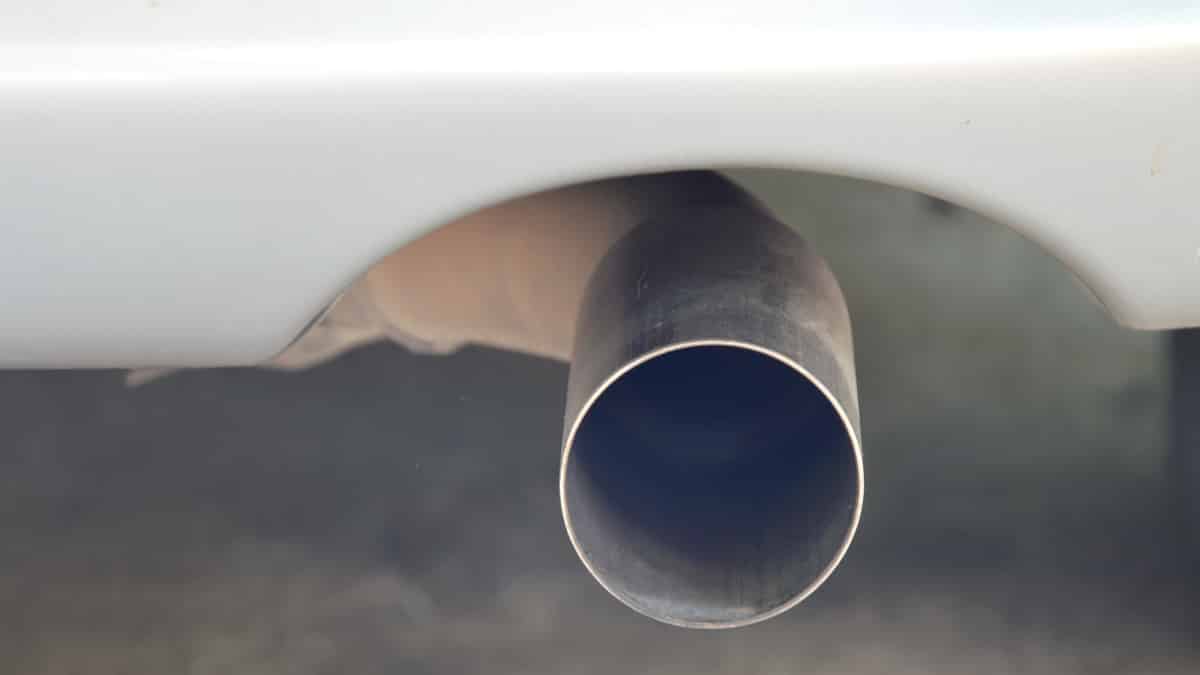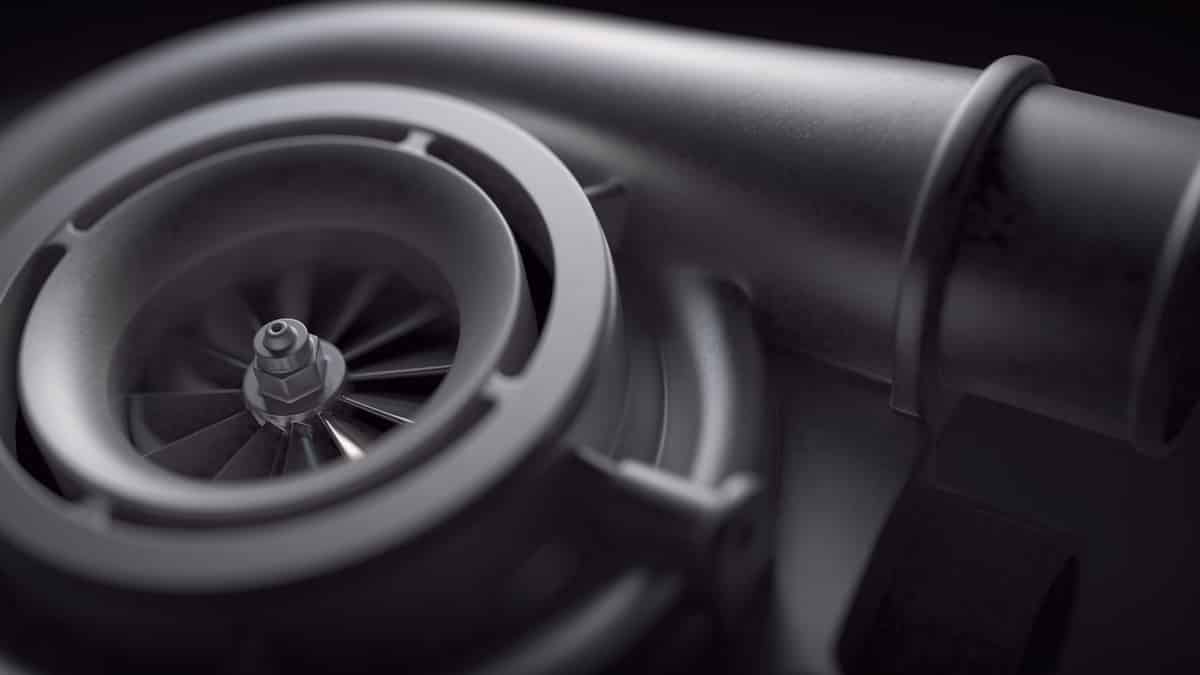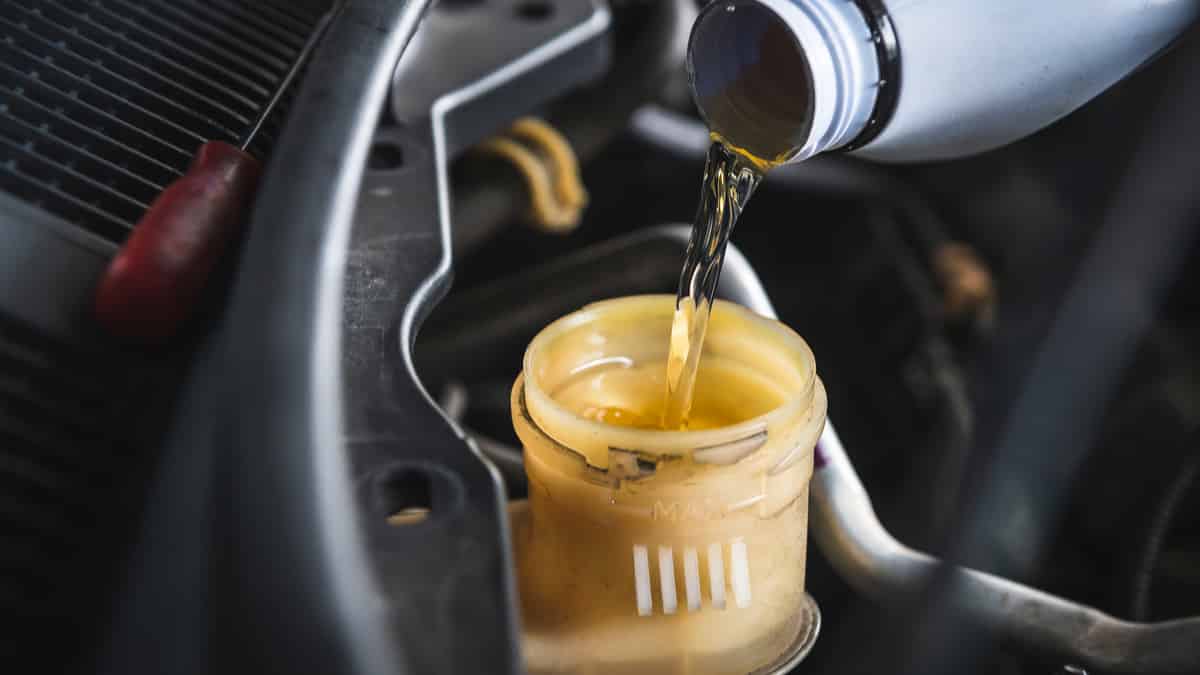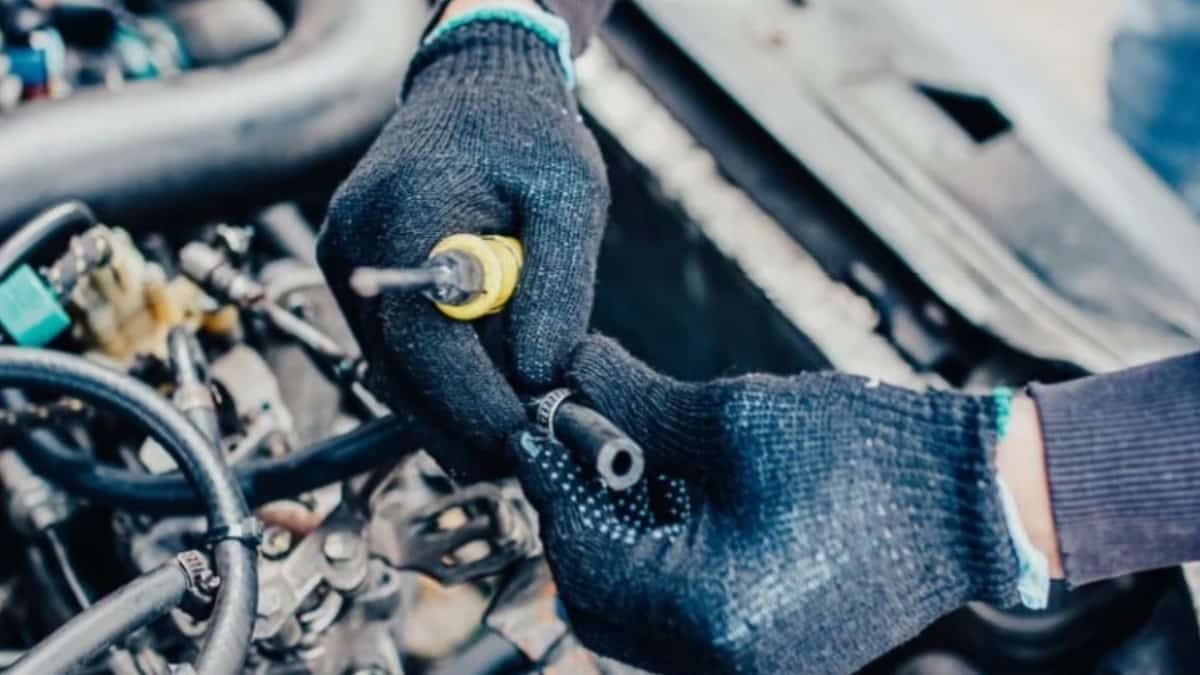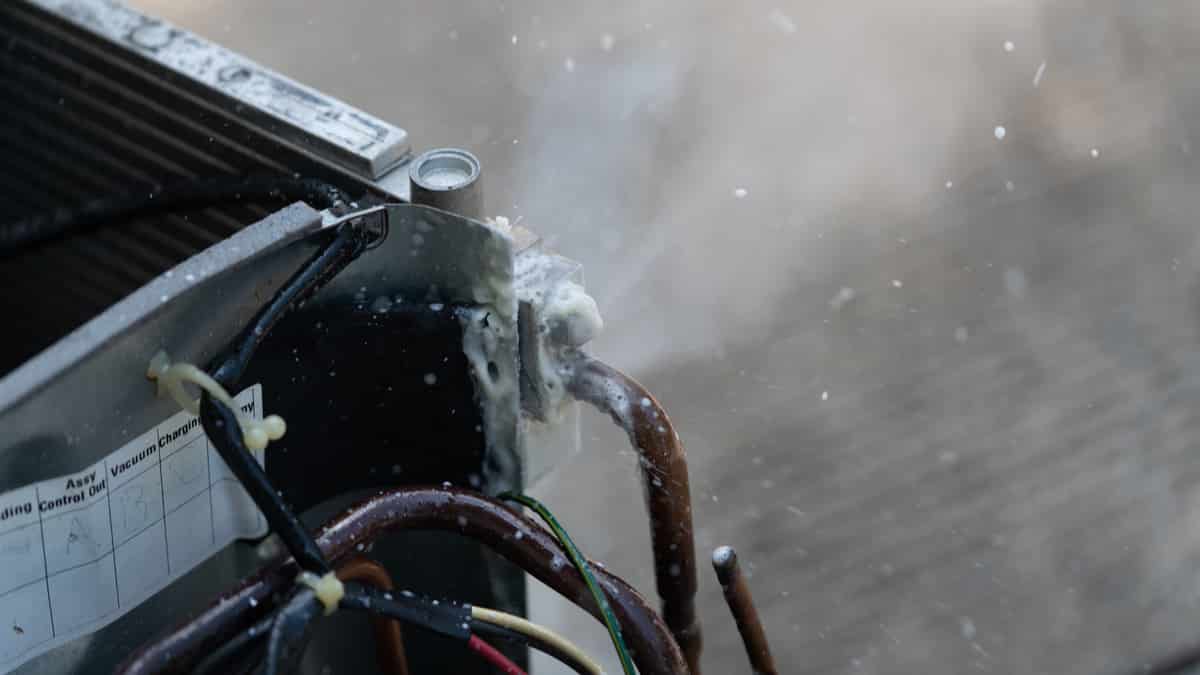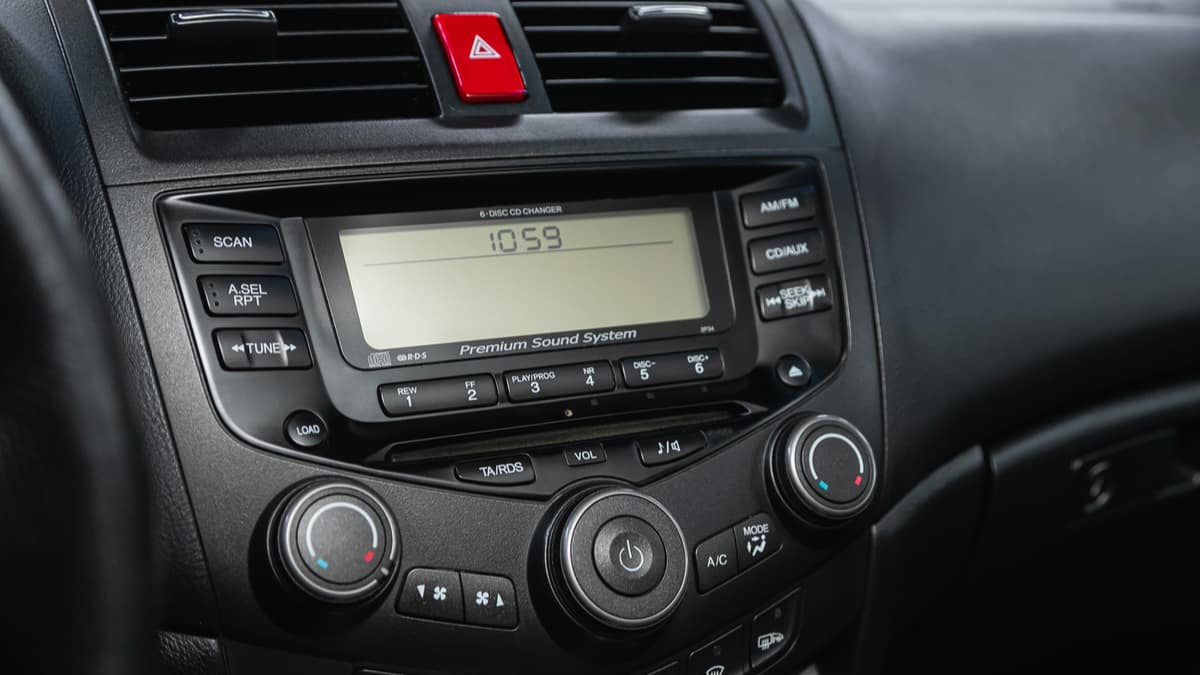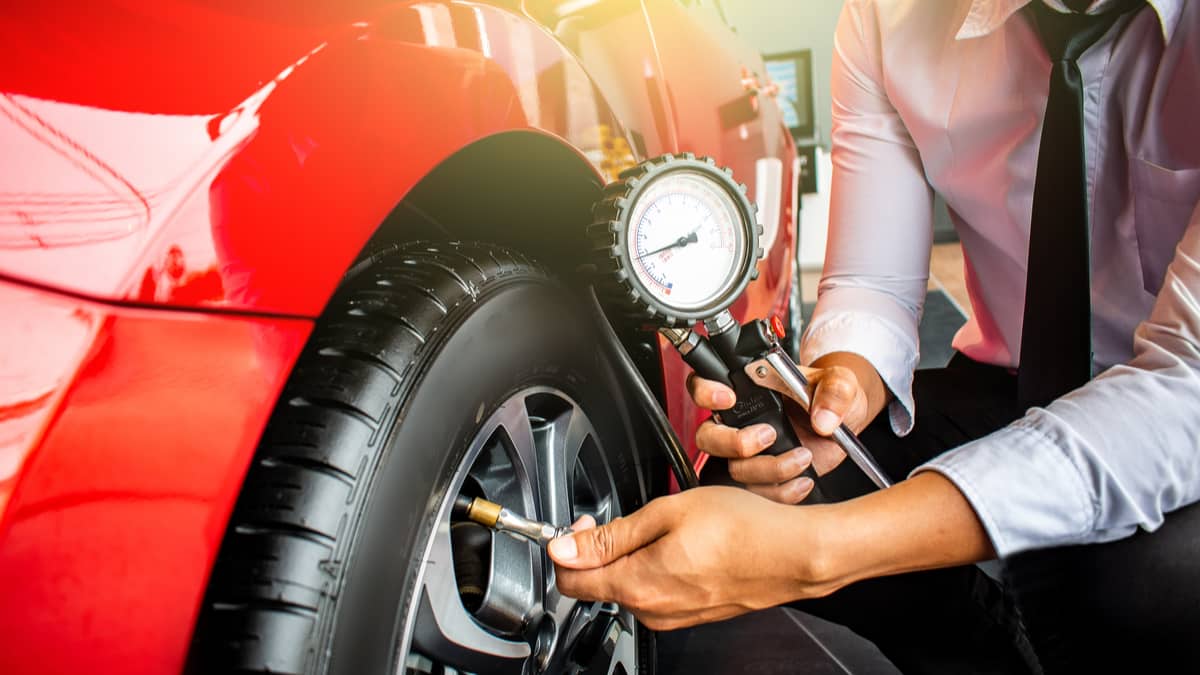If your car is experiencing a vacuum leak, you may notice a host of drivability issues. The unwanted air is going to mess with the air-fuel mixture, leading to a rougher ride. Yet, even without a lot of experience, you can learn how to find and fix a vacuum leak.
In this guide, we give you some necessary safety tips and show you different methods for finding the leak. We also look at where the vacuum leak might be occurring, discuss how to fix it and answer your top questions.
Safety for Finding Vacuum Leaks
It’s not safe to work under the hood looking for a vacuum leak unless you take special precautions. This isn’t a job to take lightly. Even as professional mechanics, we make sure we follow all of the safety rules to protect ourselves.
Here are some of our best tips.
- Put on safety glasses.
- Wear gloves to protect your skin.
- Don’t put your fingers near any moving parts.
- Don’t touch any parts that could be warm.
- Be mindful of any flammable item you use for testing.
If you aren’t sure that you are doing a test right or you don’t feel qualified, it’s best to take your car to a repair shop instead. This job isn’t the same as a simple oil change. It can be complicated and dangerous.
RELATED: 6 Symptoms Of A Vacuum Leak and Causes
How To Find A Vacuum Leak
To locate the vacuum leak, start with a visual inspection and listen for any whistling noises. You can also perform a professional smoke test or utilize flammable sprays to find the leak. On the basic end, you can apply some soap and water with a spray bottle to find a leak.
Here are your options in more detail.
1. Visual Inspection

The best way to find a leak is to look at the hoses and connections. You want to trace all of the connections around the engine compartment to see if anything appears wrong. You can find a diagram under the hood for most cars. Otherwise, you may need to purchase a service manual for a diagram to follow.
If you see a tear or crack in any hose, you know what needs to be fixed. However, if you don’t physically see anything at all, you may need to rely on one of your other senses.
2. Listen For Whistling Noises
Following the same diagram, you can listen to the various components to see if there’s a whistling sound where the air is being sucked in. If you hear the air, you may be able to spot the fault in that area.
Just remember to be careful as you get your ear into the engine compartment. Your hair, beard and fingers can easily be grabbed by any moving parts, leading to disastrous consequences.
3. Smoke Test
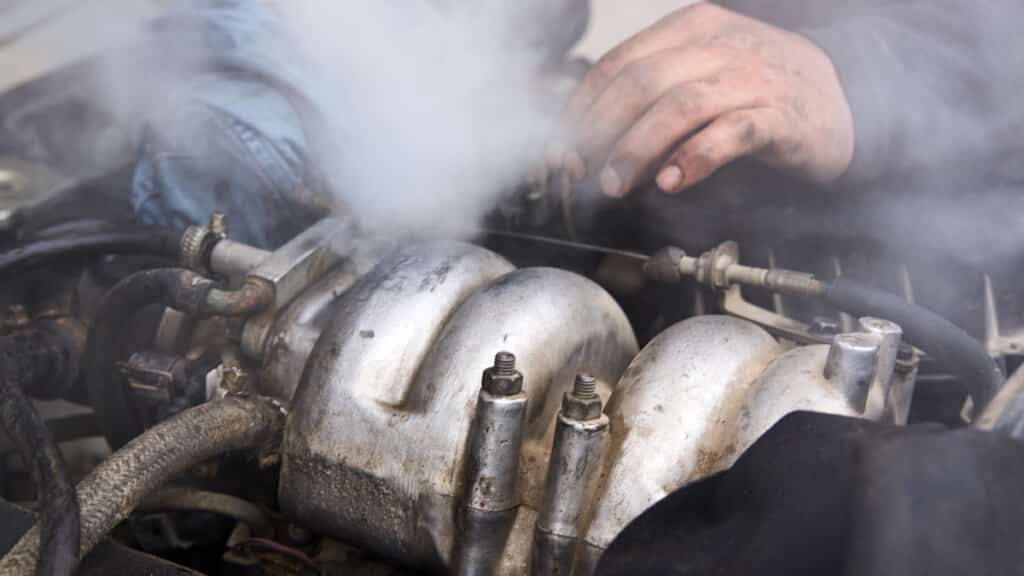
A professional test includes a smoke machine. Most smoke machines aren’t too expensive, but there are also ways to make an inexpensive smoke machine.
Either way, you pump the smoke into the system and watch to see where it’s coming from. Wherever it exits the system is the cause of your leak. A smoke machine is an invaluable tool that makes diagnosis much easier.
3. Use A Flammable Spray Carefully
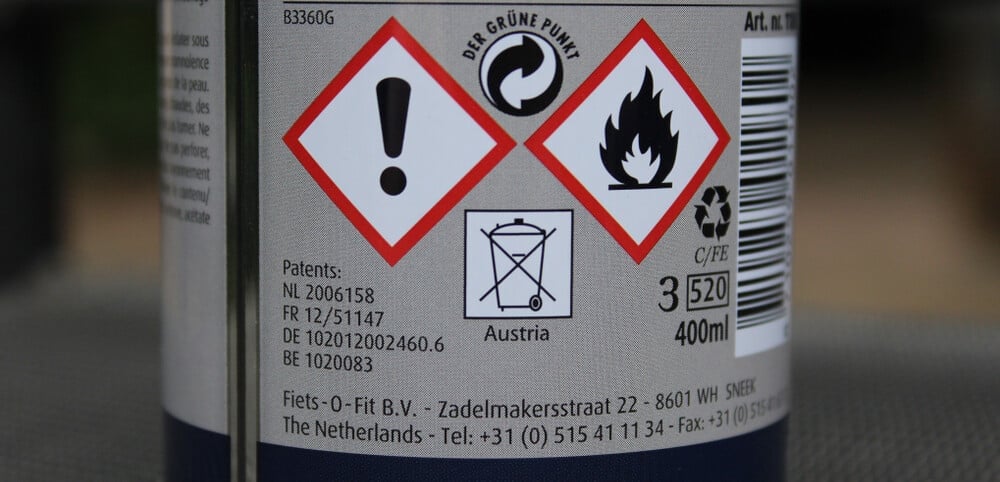
There are several different flammable sprays you could choose for this test. Some people prefer a propane torch, while others will use carb cleaner or starter fluid. Either way, it’s imperative that you exercise extreme caution during this test.
Carefully spray the chosen product on the various vacuum connections and gasket locations. As you do this, you want to listen to the idle. When the RPMs spike, you know that the flammable substance has entered the system. That’s the source of your leak.
Please keep a fire extinguisher nearby during these tests. You never know when the flammable liquid is going to touch a surface that’s too hot and ignite.
5. Soap And Water
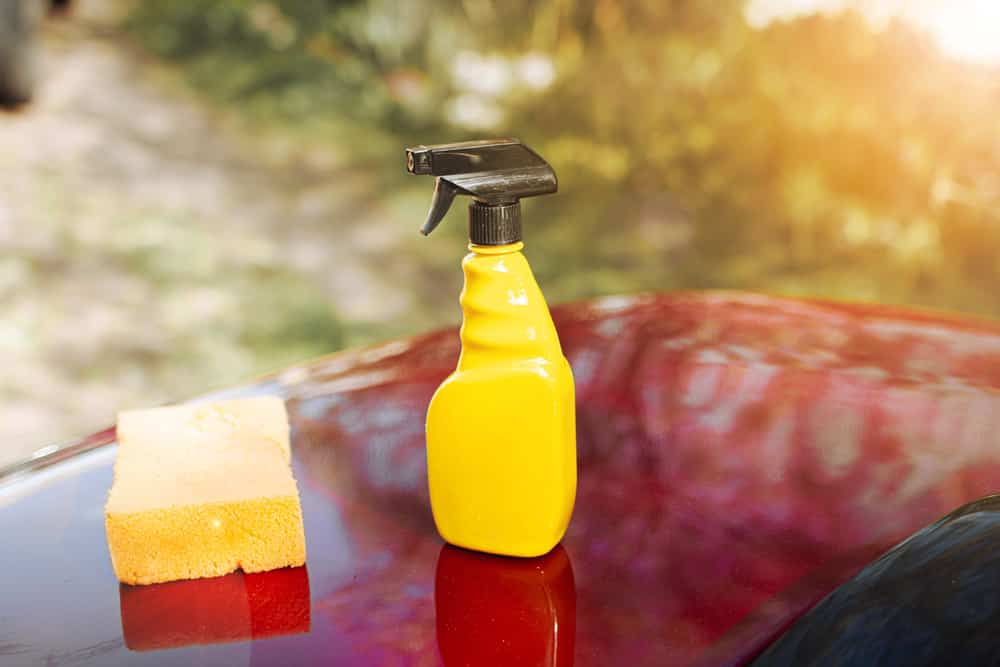
Finding a vacuum leak can be as simple as using a soap and water mixture in a spray bottle. You can spray the solution over the system and see where the bubbles are coming from.
The water and soap shouldn’t be enough to cause harm to the engine, but it should affect the idle. It’s a helpful tool for finding cracks that are difficult to spot.
Common Locations For Vacuum Leaks
Where can vacuum leaks occur? There are several common locations for these leaks. Let’s take a closer look at parts of the system to see where the problems may lie.
1. Vacuum Hoses
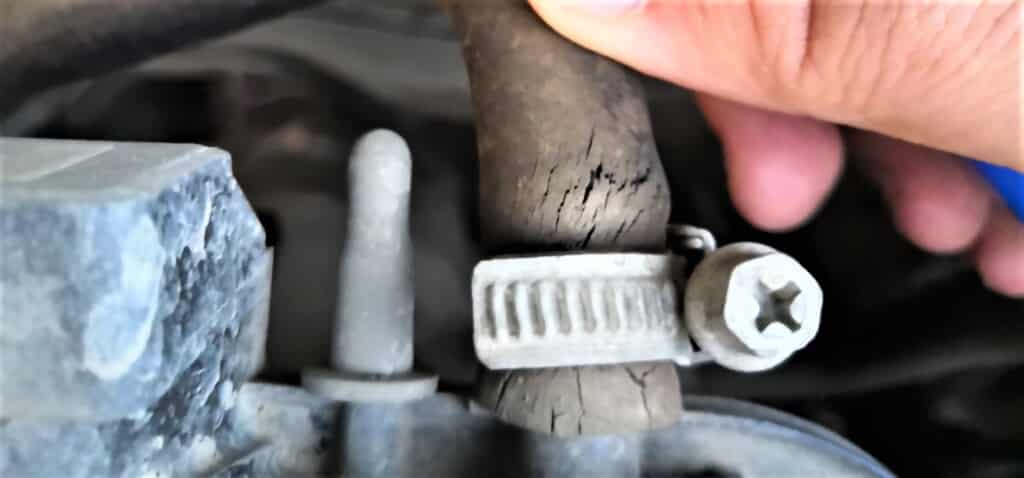
Vacuum hoses refer to the flexible tubes that transmit vacuum power to the essential vehicle components. As the hoses get smaller in size, they are known as vacuum tubing or lines instead, but the function is the same.
The manifold has ports that work as vacuum sources. The hoses connect to these ports and the various accessories or components that require vacuum. You can find vacuum hoses running to the brake booster, vacuum advance, PCV valve, HVAC controls, EGR valve and heater control valve in some vehicles.
2. Brake Booster
The brake booster increases the force being applied to the brake pedal. The booster is the component that changes the braking system from manual to power-assisted.
Most brake boosters rely on engine vacuum. Yet, there are also hydraulic boosters used.
3. Intake Manifold Gasket
The intake manifold gasket is the seal that is found between the cylinder head and the intake manifold. The intake manifold is needed to feed air to the cylinder head.
The gasket is responsible for keeping the air and fuel separated between the cylinder head and manifold. When it deteriorates, a vacuum leak can occur.
4. Solenoids & Actuators
Depending on what type of vehicle you drive, there are a variety of actuators and sensors that rely on vacuum to operate. As one example, the Manifold Absolute Pressure (MAP) sensor needs vacuum, so it can measure the outside air pressure.
If the MAP sensor has a vacuum leak, ignition timing and fuel efficiency are affected. The vacuum leak can also prevent the EGR valve from opening, leading to higher emissions and an overheating engine.
5. Throttle Body
The throttle body is responsible for adjusting how much air goes into the engine with its valve that rotates in the housing. On a carburetor engine, the throttle body is inside the carburetor. Today’s fuel-injected cars have a throttle body between the intake manifold and the air filter.
There’s a gasket between the intake manifold and the throttle body that can exhibit a leak. In some cases, the throttle body mounting bolt simply needs to be tightened. Otherwise, the gasket would need to be replaced.
How To Fix A Vacuum Leak
Once you find the vacuum leak, you are ready to fix it. Here are a few simple steps to get you started.
- If you have a damaged hose or connection, replace it. The cost to replace it can be anywhere from $100 to $600, depending on how difficult it is to get to.
- Tighten the throttle body mounting bolt if a leak is present. If that doesn’t work, replace the gasket. This repair cost is often between $150 and $650.
- Replace the intake manifold gasket if it’s leaking. Expect to spend between $300 and $650 on this repair.
- Remember to test drive the vehicle and recheck the vacuum after you’ve repaired it.
If you have trouble finding or repairing the vacuum leak, take your vehicle to a professional mechanic.
What are the symptoms of a vacuum leak?
A vacuum leak almost always produces a Check Engine Light with a corresponding trouble code. It can also lead to trouble starting the engine, rough idle and increased fuel consumption. Sometimes, you can hear the leak, which creates a whistling or whooshing sound.
Is a vacuum leak expensive to fix?
It depends on what is causing the problem. For example, if you need to replace a vacuum hose that’s easy to get to, you may spend $100 to repair it. On the other hand, you could spend $650 or more to replace the throttle body gasket, intake manifold gasket or a difficult hose.
Can I drive with a vacuum leak?
We don’t recommend driving with a vacuum leak. There’s a danger of your car stalling while in the middle of a busy highway. The vacuum leak can create more damage to the engine, leading to a more expensive repair if you don’t fix it right away.
How much does it cost to fix a vacuum leak?
You could spend anywhere from $100 to $650 to fix a vacuum leak, depending on what’s wrong. To replace a simple hose, you have the lowest repair cost. However, replacing the throttle body gasket, intake manifold gasket or a hose that’s difficult to get to makes the repair bill much higher.
What does a vacuum leak sound like?
When the leak first starts and is minimal, it may sound like a hissing or whistling sound. It can also resemble a mild whimpering noise that’s difficult to hear if you aren’t paying attention. However, if the vacuum leak is severe, it will sound like the engine is sucking air.
Because the right amount of vacuum is needed for the engine to run correctly and for other components to function normally, it’s important that you take any leak seriously. At the first sign of trouble, you want to find the leak before it becomes any worse.
You can inspect and repair the system yourself or take it to a local mechanic. The only thing you don’t want to do is procrastinate and put off the fix. Allowing a leak to continue only leads to more disastrous consequences.
